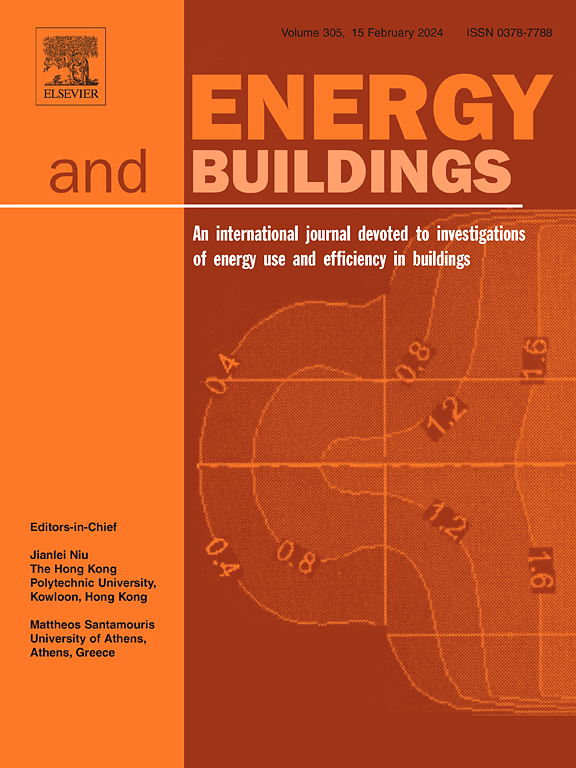Projecting and estimating HVAC energy savings from correcting control faults: Comparison between physical and virtual metering approaches
IF 6.6
2区 工程技术
Q1 CONSTRUCTION & BUILDING TECHNOLOGY
引用次数: 0
Abstract
Fault-impact analysis (FIA) in heating, ventilation, and air conditioning (HVAC) systems involves forecasting system loads in the absence of equipment malfunction and inappropriate sequences of operations with the intention of setting a target for optimal operating energy use and encouraging and augmenting fault correction. Fault correction is an ongoing and resource-intensive endeavor for operations personnel, often motivated by occupant complaints rather than to mitigate excessive operating energy use. Thus, projecting the energy-use impact of faults is imperative to improving building energy efficiency as it leverages the potential to reduce energy use for real-time operational decision-making. Thermal energy meters (i.e., physical meters) can provide post-correction validation by quantifying the energy-use impact of faults, though are incapable of projecting this information before faults are corrected and providing motivation. Additionally, their installation and maintenance costs in existing buildings are often prohibitive. Virtual meters (VMs) which leverage HVAC controls data offer a cost-effective alternative to physical meters. Furthermore, inverse-model (IM)-based VMs enable scalable FIA by employing derived IMs at the system and zone level to emulate alternative control scenarios. This paper presents the first ever field implementation of FIA-capable VM algorithms. An automated and BAS-integrated VM algorithm was deployed in a living-lab facility in Ottawa, Canada, and the VM-estimated energy-use impact of correcting common soft faults is presented and compared with savings reported by thermal meters and savings projected by the FIA. For combined system- and zone-level heating, VMs estimated 85% of the measured energy-use savings, and a 65% reduction in energy use was projected prior to correcting faults where a 62% reduction was realized after faults were corrected. VMs can appropriately assess and project energy savings for fault correction so long as the method to baseline pre-correction energy use persists after correction.
求助全文
约1分钟内获得全文
求助全文
来源期刊

Energy and Buildings
工程技术-工程:土木
CiteScore
12.70
自引率
11.90%
发文量
863
审稿时长
38 days
期刊介绍:
An international journal devoted to investigations of energy use and efficiency in buildings
Energy and Buildings is an international journal publishing articles with explicit links to energy use in buildings. The aim is to present new research results, and new proven practice aimed at reducing the energy needs of a building and improving indoor environment quality.
 求助内容:
求助内容: 应助结果提醒方式:
应助结果提醒方式:


